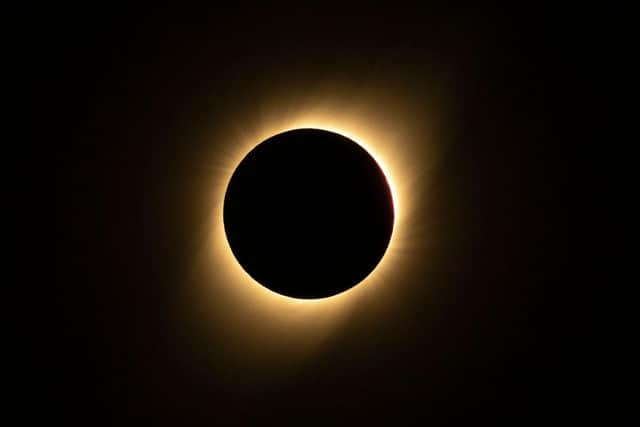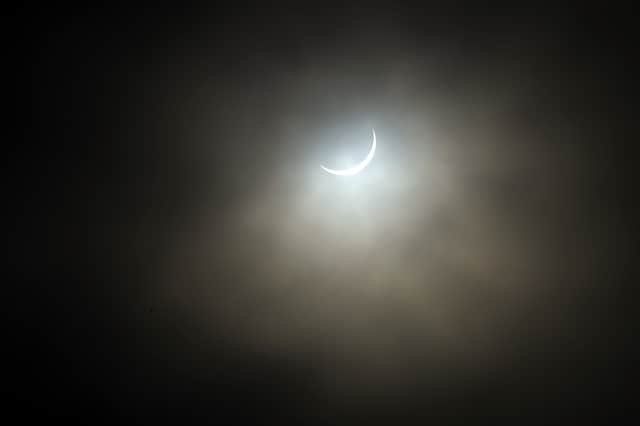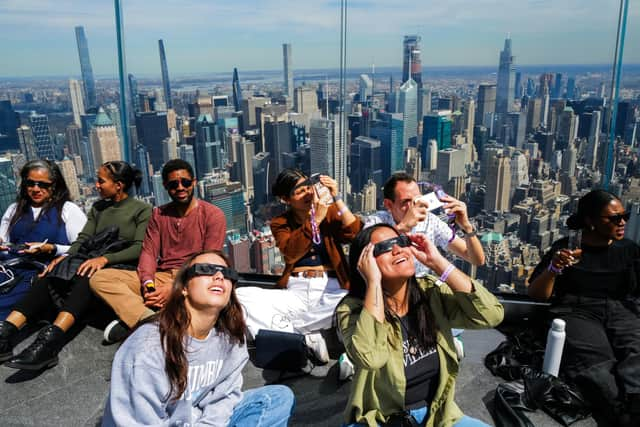When and where is the next solar eclipse? What to know about the next eclipse which will be visible in the UK
People in Scotland were among the very few in the UK able to catch a glimpse of a partial eclipse on April 8, 2024.
Passing over North America, tens of millions of people in the United States gathered to watch the total eclipse, while in the UK it was only visible to those with clear skies in northern and western Scotland.
Advertisement
Hide AdAdvertisement
Hide AdBecause the moon is much smaller than the sun, the shadow it casts on Earth during a solar eclipse is only visible in certain places and for those in the UK, it won’t be until around 2090 that another total eclipse will be visible from the country.
Here is everything you need to know about when and where the next solar eclipse will be.
What is an eclipse?
An eclipse of the sun is when the moon moves directly between the sun and earth – during a solar eclipse, Earth is essentially in the moon’s shadow.
However, due to the size of the moon this shadow only covers a small section of Earth’s surface which is why it isn’t visible across the world.


What is a total solar eclipse?
A total solar eclipse occurs when the moon passes between the sun and Earth completely blocking the face of the sun, with the sky darkening as if it is dawn or dusk.
The last time the path of a total eclipse went over the UK was in 1999, and the next total eclipse won’t take place in the UK until 2090.
When and where is the next solar eclipse?
If you missed out on the eclipse there will be another later this year, however it won’t be visible in the UK. The annular eclipse, when the moon passes the centre of the sun but doesn’t completely block it, will be visible in several South American countries and pass Argentina and Chile on October 2.
There will then be a partial solar eclipse visible from the UK on March 29, 2025. It will begin at around 10.07am, with maximum coverage occurring at around 11.03am when the sun is expected to be around 40% obscured in some cities in Scotland.


Advertisement
Hide AdAdvertisement
Hide AdFollowing this, the next solar eclipse will take place on August 12, 2026 - another total eclipse. Covering the northern hemisphere, the totality of the eclipse will not be visible from the UK however, those in the country will see a partial eclipse of around 90%.
There won’t be another total eclipse in the UK until September 23, 2090, according to the Royal Observatory in Greenwich. Previously, the last total eclipse in the UK took place in 1999.
How to safely view the solar eclipse
It is crucial to protect your eyes when viewing a solar eclipse.
The intense rays of the sun can cause serious harm – including blindness – if you look directly at the eclipse with no protection.


Specialised solar eclipse glasses are available to purchase. They must meet the ISO 12312-2 safety standard, indicating that they provide adequate protection for solar viewing – normal sunglasses should never be used as a substitute.
In addition, you can create a pinhole camera or projection which will project an image of the sun to view the eclipse safely.
Comments
Want to join the conversation? Please or to comment on this article.
